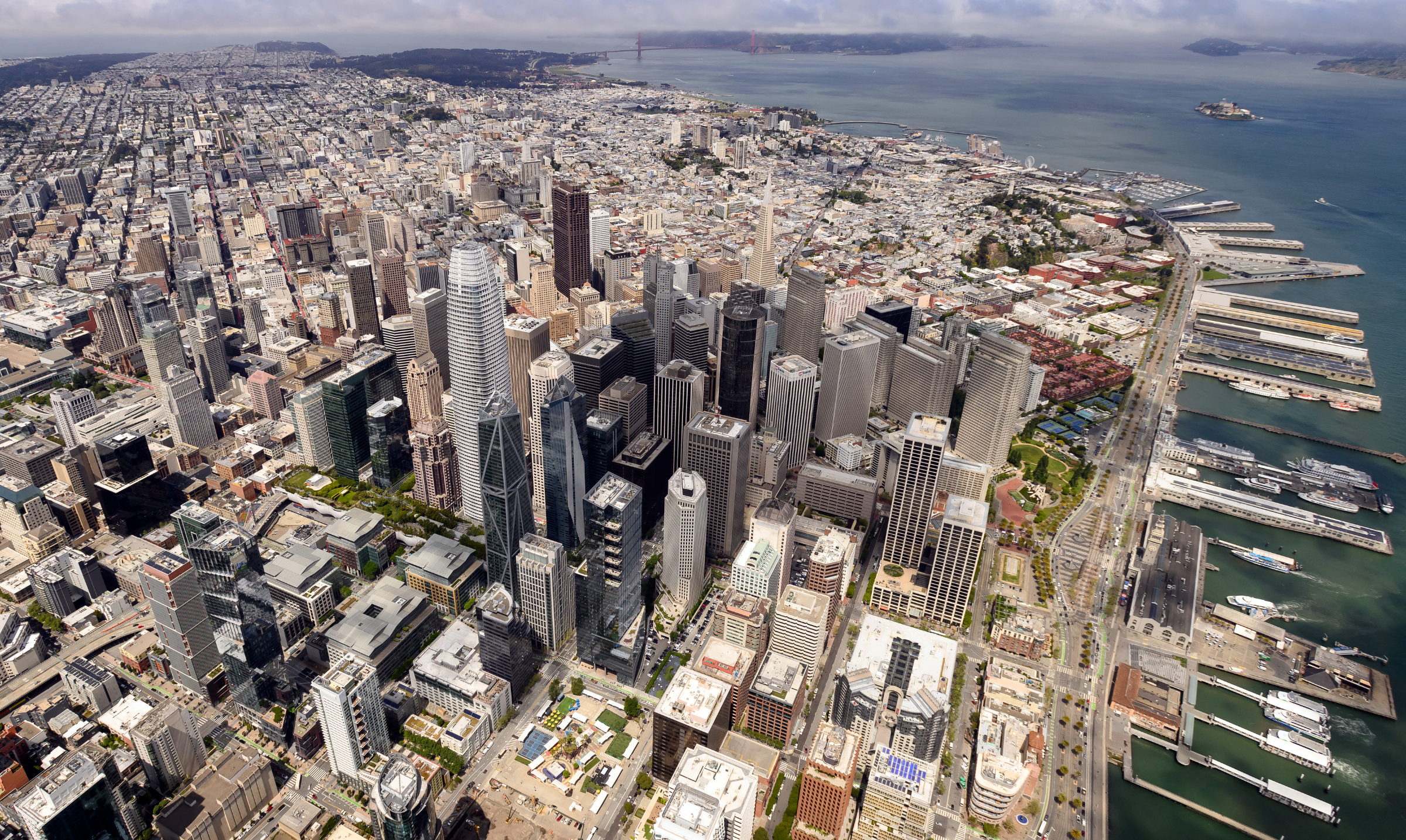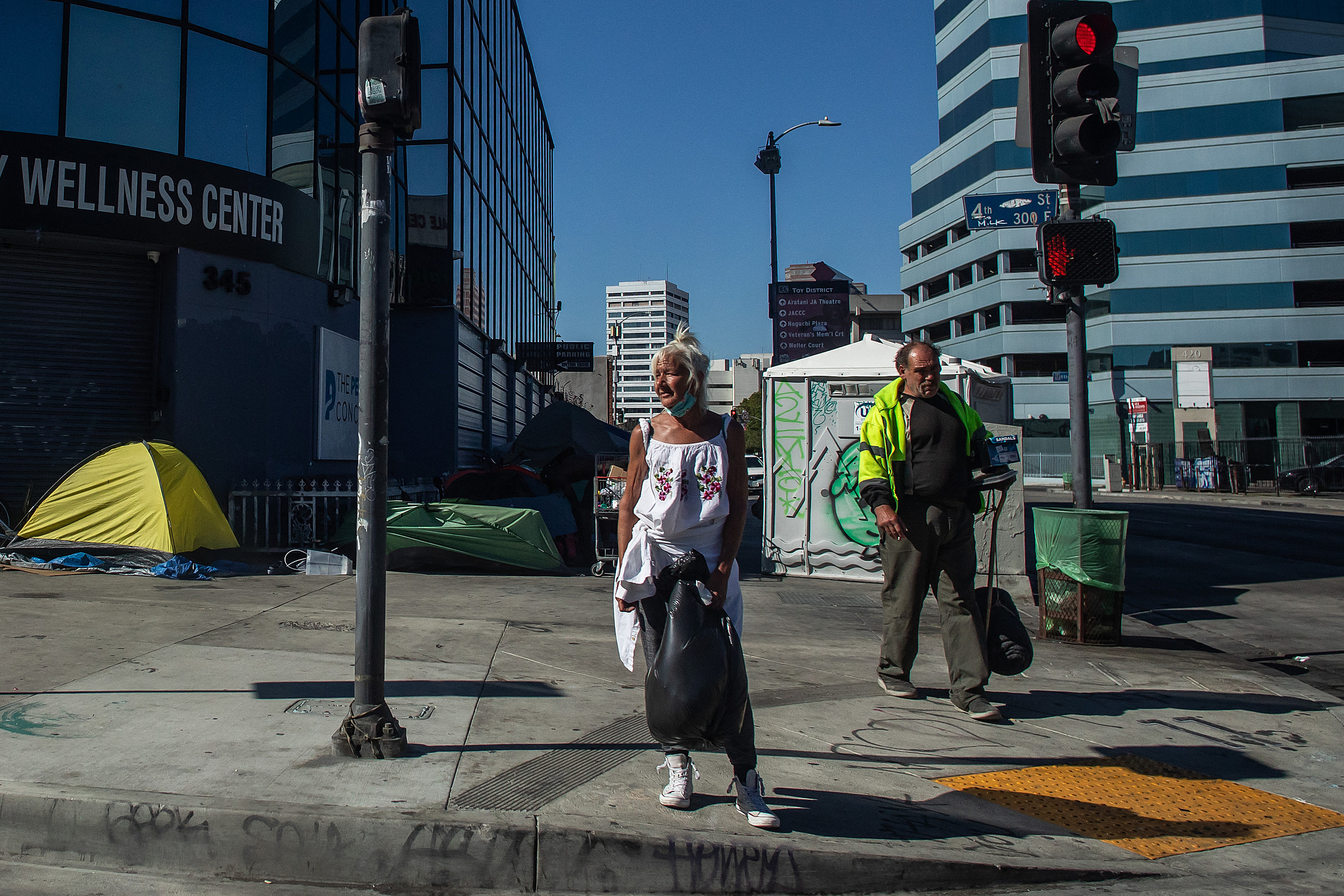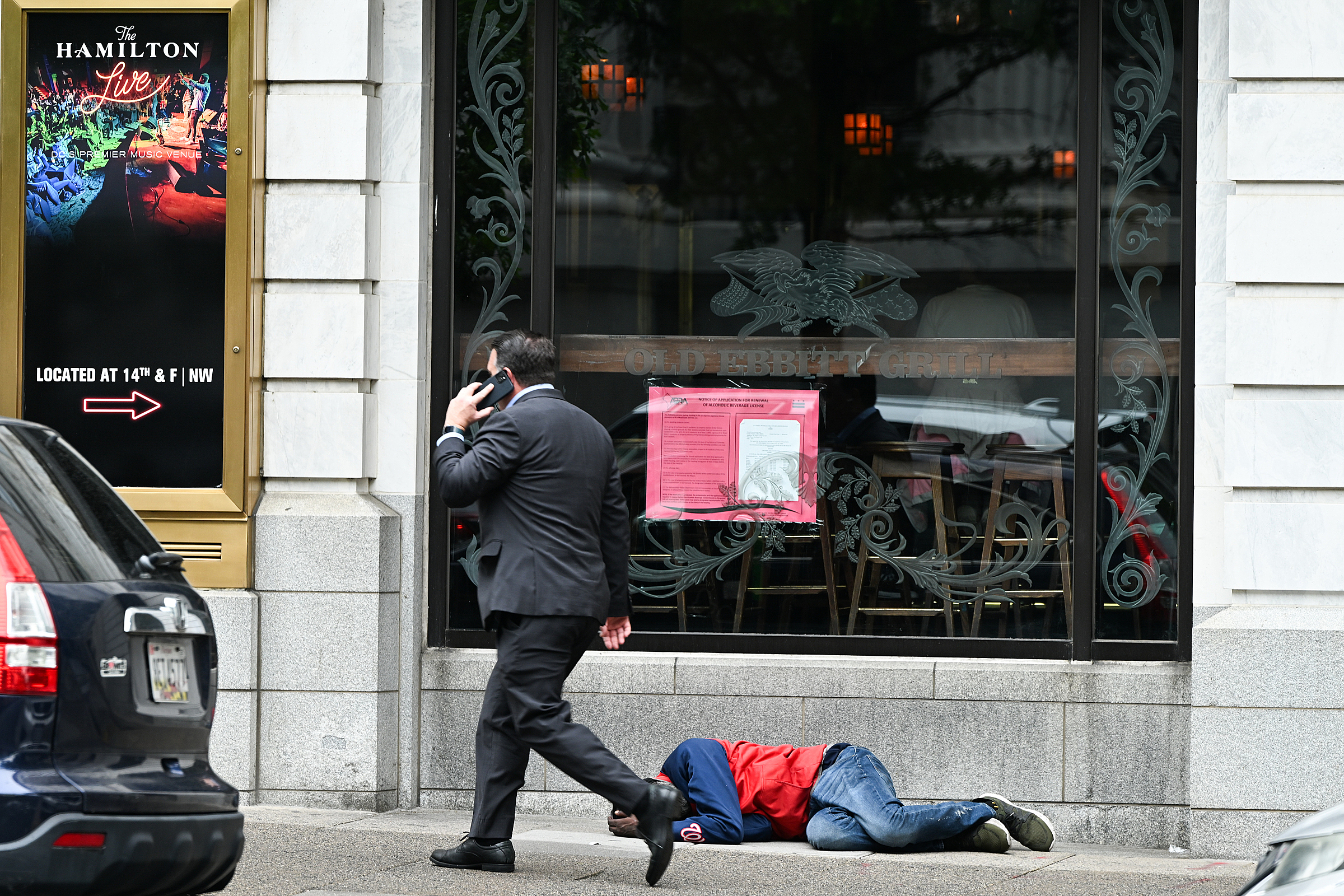After Covid-19, the US has seen its major city centers hollowed out, with shopping malls, offices, and restaurants closing en masse, and fewer people coming to work or visit.
At the time, experts believed that American cities were undergoing a fundamental shift rather than a cyclical change. In 2023, John Rennie Short, an urban policy expert with 50 years of experience, commented that classic US downtowns were "dying".
In late 2024, economist Nicholas Bloom from Stanford University published research indicating that the desolation in the downtowns of America's largest cities persists. He called this the "donut effect," referring to the hollowing out of central financial districts while surrounding areas become more vibrant.
 |
Downtown San Francisco, California. Photo: AFP |
Downtown San Francisco, California. Photo: AFP
Professor Bloom's research team concluded that downtown economies are unlikely to recover after the pandemic. Downtowns in the 12 largest US cities have lost 8% of their population, many of whom have moved to the suburbs. The "donut effect" is not present, or is very limited, in small and medium-sized cities.
The number of businesses in the downtowns of large cities has decreased correspondingly. According to the Stanford University research team, the main reason is the sustained trend of working from home after the pandemic, especially among highly skilled personnel, who make up the majority of those leaving downtown areas.
"Overall, many US downtowns are in crisis, especially in the Midwest and large cities where the rate of employees returning to the office is low, such as San Francisco or Seattle," said Konrad Putzier, a veteran real estate reporter for the WSJ.
The downtowns of Los Angeles and San Francisco in California are considered to be among the hardest hit, even experiencing squalor, with rampant homelessness and drug addiction, while office rents have skyrocketed.
According to research firm Avison Young, about one-third of the commercial space in downtown Los Angeles is vacant. The NY Post estimates that more than 100 storefronts are empty.
According to urban policy expert Short, the downtowns of US cities were actually struggling before the Covid-19 pandemic, as the current oversupply of commercial space is the result of years of accumulation.
 |
A homeless woman sets up a tent in downtown Los Angeles, California, on 25/7. Photo: AFP |
A homeless woman sets up a tent in downtown Los Angeles, California, on 25/7. Photo: AFP
The urban real estate market is speculative. When the economy booms, individual real estate developers decide to increase construction. And these individual decisions lead to an oversupply of buildings," Short explained.
In the 1980s, the Reagan administration changed the depreciation policy for commercial real estate, effectively reducing taxes for real estate developers. Along with the wave of financial globalization, foreign capital poured into the US real estate sector, especially large projects.
Years of low interest rates in the US meant that real estate developers could easily borrow capital for projects. City governments also actively approved projects that could generate tax revenue. As a result, in the downtowns of the largest US cities, office space now accounts for 70-80% of the total real estate area.
"Covid-19 and technology finally burst this 40-year bubble. People are changing their work habits to be more flexible, switching to online work, and gradually moving away from central areas to 'Zoom towns' where housing is cheaper and there are more parks and outdoor amenities," Short said.
Downtown Minneapolis, Minnesota, has seen positive signs as workers return to the office, but the real estate situation remains chaotic.
According to Axios, downtown Minneapolis currently has more than 836,000 m2 of vacant office and retail space, out of a total of about 1.86 million m2 vacant in the Twin Cities metropolitan area. At the current rate of occupancy in the most recent quarter, observers estimate it will take up to 30 years for all of this office space to be leased.
 |
Homeless people sleep on the sidewalk in downtown Washington, D.C., on 27/5. Photo: Reuters |
Homeless people sleep on the sidewalk in downtown Washington, D.C., on 27/5. Photo: Reuters
Experts say the "donut effect" has a huge ripple effect. Many businesses, from restaurants and retail stores to services in large cities, depend on the downtown workforce. According to a study by the University of California, at least 17% of all jobs in the entertainment and hospitality industries are concentrated in the downtowns of the 100 largest US cities.
The departure of a large portion of the workforce from downtown means a sharp decline in tax revenue and economic activity in the area, forcing officials to balance budgets.
Washington is an example. The US capital has lost tens of thousands of jobs compared to early 2020 and faces a growing budget deficit due to declining property tax revenue, stemming from downtown business closures and declining real estate transactions. The capital region government forecasts the city's revenue will decrease by 183 million USD in 2025 and 200 million USD in 2026.
For the transportation sector and public transit, changes in commuting patterns and habits have led to budget and service cuts, sometimes causing severe damage.
WSJ reporter Putzier also believes that commuting is a major reason, as US cities are planned in such a way that many people have to drive long distances from suburban homes to offices.
"Many places do not have a public transportation network, and if they do, it is often slow and unreliable. There are also other factors, such as a general concern among many employees about safety and security, especially older people, that downtowns are becoming increasingly dangerous," Putzier said.
Duc Trung (According to Washington Post, Conversation, Axios, WSJ)












